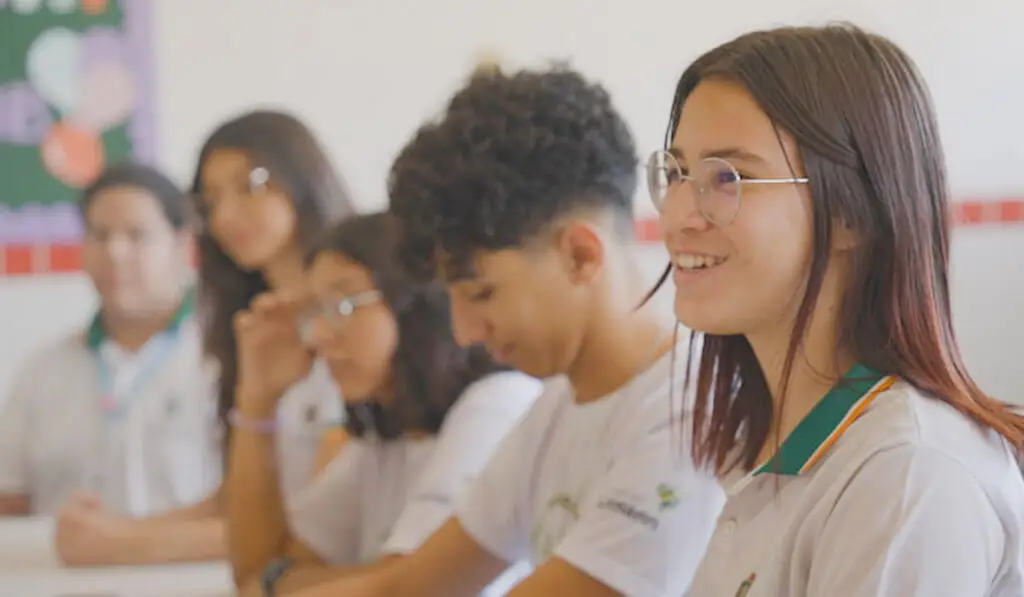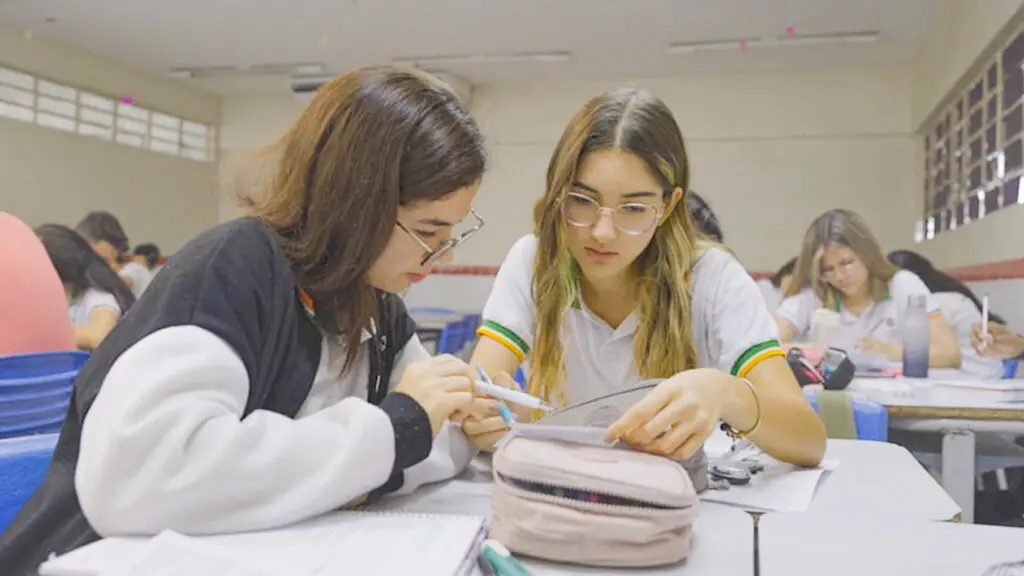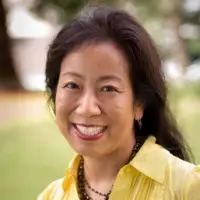An unconventional approach
Professor Manoel Andrade Neto anxiously scanned the list of students admitted to Brazil’s Federal University of Ceará. He hoped that one student, Toinho, had been prepared enough to qualify. He turned to the last page of the list, where the lowest scorers would appear. Toinho had prepared for the high-stakes exam in a completely unconventional way: teaching and learning from his peers who were also high school dropouts. Andrade’s heart tightened as he turned each page, not seeing Toinho’s name. But then, there it was: at the top of page one.
This sounds like a scene from an ’80s after-school special, but it’s a true story from Brazil in the ’90s. Andrade grew up in the poor, rural community of Cipó, a town so small it’s barely on a map. He was one of few kids who made it: he got into university and went on to teach chemistry at the Federal University of Ceará. He attributed a large part of his success to what he learned from his peers in a study group in Cipó, and years later, when he saw that adolescents in his hometown were unable to attend high school because of a teacher shortage, he convinced a few teens to try teaching each other, supplying books and encouragement.
After another boy from Cipó was admitted to the Federal University of Ceará, word spread, and more students in the region formed their own cooperative learning groups. As a result, hundreds of students have been admitted to Brazil’s highly selective federal universities. Over the years, many of these students have become classroom teachers themselves, implementing the cooperative learning model that led them to academic success.
When the municipality of Pentecoste opened a new high school in 2012, they partnered with Andrade to incorporate his peer-to-peer learning methodology as a core part of their program. On Brazil’s national assessment, this high school now ranks first in the performance of low-income learners among all schools in the state of Ceará. Other Brazilian municipalities, including the state capital of Fortaleza, have sent teachers to be trained in this methodology. This approach also holds promise for schools in the United States.

Peer-to-peer learning: How it works
Peer-to-peer learning, or cooperative learning, takes place when students collaboratively learn from and teach one another, fostering a dynamic and interactive learning environment. In contrast to a traditional high school classroom, this method requires much more active student participation, critical thinking, and nimble communication. Andrade has found that it helps students become empowered learners with a sense of agency. The approach also builds empathy as a result of meaningful discussions with others, and fosters a more inclusive learning environment for students with different abilities. Students who participate often become strong and adaptable leaders from their experience as both teacher and learner.
Cooperative learning is not a new idea, nor is it unique to this small town in Brazil. In 1999, Sugata Mitra, an education technology professor, designed the now-famous “hole in the wall” experiment that demonstrated how children—even those in resource-poor areas—can learn to use technology effectively with minimal adult supervision. Similarly, Dutch NGO Aflotoun International provides financial and social programming for youth across the globe using peer-led methodologies, such as youth-led social enterprise development and peer-facilitated financial discussion circles. PeerTeach, a U.S. based education technology company, helps train students in peer tutoring to build stronger relationships and academic success. Research supports this approach as well: a recent paper that analyzed peer-to-peer learning techniques in 17 countries found that the methodology led to heightened engagement and increased learning outcomes.
In the U.S., the Cooperative Learning Institute has promoted this approach since 1987. Champions of student-centered learning integrate peer-to-peer activities into their daily classroom practice. When the Cipó students decided to codify their approach, they sought out Roger and David Johnson, the American researchers behind CLI. The students saw parallels between CLI’s five elements for effective cooperative learning (positive interdependence, individual accountability, promotive interaction, social skills and group processing) and their own experiences.

For the students in Cipó, this approach goes beyond implementing an engaging learning strategy. It is an expression of solidarity and a shared commitment to each others’ learning and lives. It’s why they consider themselves part of a movement, and named their collective work of sharing this practice Movimento PRECE.
“At first, I just wanted to learn math for me,” said Isabel, a student at Alan Pinho Tabosa High School in Pentecoste. “But eventually, I started to realize that it’s kind of silly for me to have been so focused on answering my own math question when actually, the collective goal was actually so much more meaningful for us as a community, since we have to solve problems together, in class as in life.”
As Andrade puts it, “it all begins with deeply knowing and caring for the other.” This is why Moviemento PRECE programs begin with students telling their own life stories in groups of three. Peers are then responsible for demonstrating their understanding by sharing each others’ stories, and then the wider group discusses connections and similarities. Once students understand the needs of those in their group, their peers’ goals become collective goals. If one student aspires to become an engineer, their peers actively seek ways to support their classmate in achieving that goal.
Isabel reflected, “When you sit down and have the experience of sharing needs and resources and knowing others and their goals, you shift your vision of society and the world. You’re helping someone without needing something in return, but end up feeling a sense of happiness because you’re learning not for you only, but in solidarity.”

Post-pandemic learning recovery
For disengaged students in the U.S. struggling with mental health needs and learning gaps, peer-to-peer learning may be a potent strategy for post-pandemic recovery. It emphasizes collaboration and empathy, and can help students cope with their emotions and build resilience. Students who feel valued and connected may be more apt to learn alongside their trusted peers, leading to a positive classroom culture and bridging learning gaps. Peer-to-peer learning can also foster student interest in education as a career, a potential long-term solution to teacher shortages.
But despite evidence showing that cooperative learning helps foster academic and social growth—a key concern for U.S. schools trying to help kids catch up from pandemic learning loss—the practice isn’t widely known. In fact, even teachers who know and favor its principles struggle to implement cooperative learning in class, according to a recent study in the Journal of Education for Teaching. “Teachers reported that they would like to learn more about cooperative learning and use it more often in class,” write the authors of the 2020 study. “They were especially interested in support such as lesson examples and teaching materials.” Through peer-to-peer learning, teachers can better help students participate actively in their learning, build a sense of collective agency, and view education as future career path—but more systems need to invest in its implementation.




